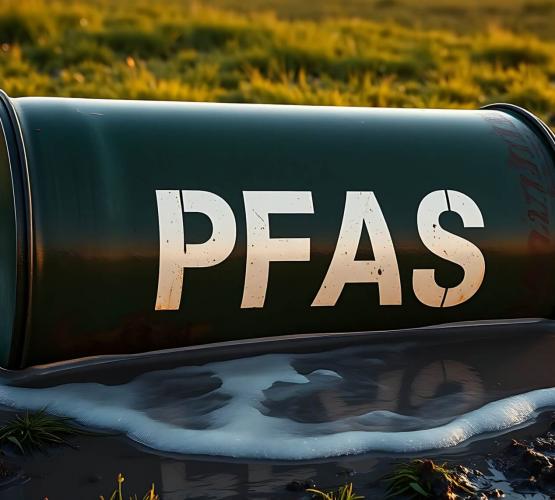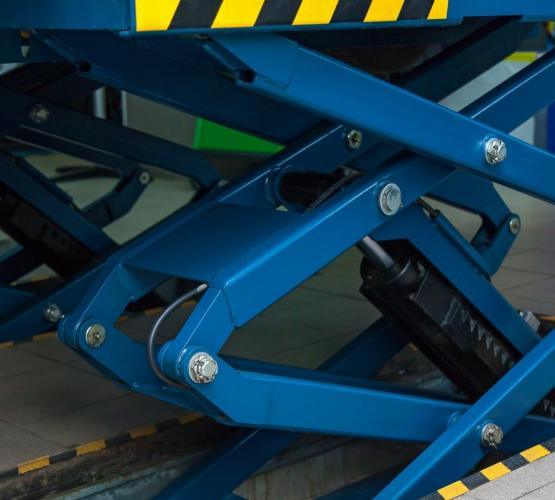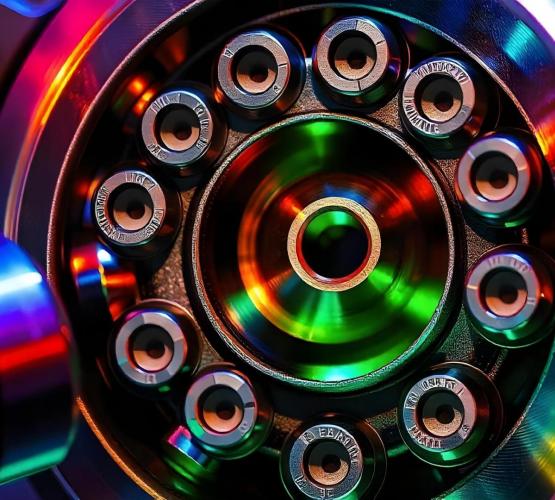
Replacing Bushings with PTFE-Based Fabric Liners
Transitioning from Bronze to Steel.
Bronze bushings have long been a staple in various industries, offering excellent wear resistance and load-bearing capabilities. However, evolving technological advancements have led to the emergence of steel bushings with PTFE-based fabric liners as viable alternatives. This article explores the considerations, benefits, and steps involved in transitioning from bronze to steel bushings, shedding light on the advantages of incorporating PTFE-based fabric liners.
Understanding Bronze Bushing
Characteristics of Bronze Bushings
Bronze bushings, commonly made of bronze alloys such as phosphor bronze or aluminum bronze, have been widely utilized in applications where low friction and robust wear resistance are essential. These bushings are particularly favored in situations involving moderate to heavy loads, oscillating movements, and challenging environmental conditions.
Wear Resistance
Bronze bushings are renowned for their wear-resistant properties, making them suitable for demanding applications where components undergo continuous movement and loading.
Self-Lubricating Capability
One of the key advantages of bronze bushings is their self-lubricating capability, thanks to the natural lubricity of the bronze material. This feature minimizes the need for additional lubrication systems in certain applications.
Limitations
While bronze bushings offer various advantages, they also come with limitations. These include a susceptibility to corrosion in certain environments, potential for galling under heavy loads, and limited suitability for high-speed applications.
Advantages of Steel Bushings with PTFE-Based Fabric Liners
Wear Resistance and Load-Bearing Capacity
Steel bushings, often made from materials such as carbon steel or stainless steel, can exhibit comparable or even superior wear resistance to bronze. The addition of a PTFE-based fabric liner further enhances their ability to withstand friction and wear, making them suitable for diverse applications with varying load conditions.
PTFE-Based Fabric Liner
The inclusion of a PTFE-based fabric liner in steel bushings provides a low-friction interface, reducing wear and ensuring smooth operation. PTFE, known for its excellent self-lubricating properties, creates an effective barrier between the steel surfaces, minimizing friction and preventing metal-to-metal contact.
Load-Bearing Capability
Steel, inherently robust and durable, allows for the construction of bushings capable of handling heavy loads. When paired with a PTFE-based fabric liner, the load-bearing capacity is further optimized, making steel bushings suitable for applications with substantial mechanical stresses.
Corrosion Resistance
Unlike bronze, which may be prone to corrosion in certain environments, steel bushings with a PTFE-based fabric liner offer enhanced corrosion resistance. The PTFE liner acts as a protective barrier, preventing moisture and contaminants from reaching the steel surface and causing corrosion.
Applications in Harsh Environments
The corrosion-resistant properties of steel bushings make them well-suited for applications in harsh environments, such as marine and chemical processing industries, where exposure to moisture and corrosive substances is common.
Temperature and Chemical Resistance
Steel bushings with PTFE-based fabric liners exhibit excellent temperature and chemical resistance. This makes them suitable for applications where extreme temperatures or exposure to chemicals could compromise the performance of other materials.
High-Temperature Applications
Steel bushings can withstand higher temperatures than some bronze alloys, expanding their applicability in situations where heat resistance is crucial.
Chemical Compatibility
The chemical resistance of PTFE further broadens the range of applications for steel bushings, allowing them to function effectively in environments where exposure to acids, solvents, and other corrosive substances is a concern.
Considerations for Replacement
Compatibility with Existing Systems
When contemplating the transition from bronze to steel bushings with PTFE-based fabric liners, compatibility with existing systems is a paramount consideration. This involves assessing the dimensions, tolerances, and load requirements of the current bronze bushings and ensuring that the replacement components align with these specifications.
Dimensional Considerations
Careful measurement and comparison of the dimensions of bronze bushings against the proposed steel counterparts are essential. This ensures a seamless transition without the need for extensive modifications to existing machinery or equipment.
Load Analysis
Understanding the load-bearing requirements of the application is crucial for selecting steel bushings with the appropriate load capacity. This involves analyzing factors such as static loads, dynamic loads, and potential variations in load direction.
Lubrication Systems
While steel bushings with PTFE-based fabric liners offer inherent lubricating properties, it's essential to consider the lubrication requirements of the specific application. Some systems may benefit from supplementary lubrication, while others may operate effectively with minimal or no additional lubrication.
Self-Lubricating Properties of PTFE
The self-lubricating nature of PTFE provides a significant advantage, reducing the reliance on external lubrication systems. However, assessing the lubrication needs of the application helps determine the most effective and efficient maintenance practices.
Operational Conditions
Consideration of the operational conditions is vital for ensuring the optimal performance and longevity of steel bushings with PTFE-based fabric liners. Factors such as temperature variations, environmental contaminants, and oscillating movements should be evaluated to determine the suitability of the replacement components.
Temperature Range
Understanding the temperature range in which the machinery operates is crucial for selecting steel bushings that can withstand the specific thermal conditions. This prevents premature wear or degradation of the PTFE-based fabric liner.
Environmental Factors
Consideration of environmental factors, such as exposure to moisture, chemicals, or abrasive substances, helps in choosing steel bushings with the appropriate corrosion resistance and material compatibility.
Steps for Replacement
Removal of Bronze Bushings
The replacement process begins with the removal of existing bronze bushings. This involves disassembling the machinery or equipment to access the bushings, which may be press-fitted, threaded, or secured by other means.
Inspection
Before removal, a thorough inspection of the bronze bushings is conducted to assess their condition, wear patterns, and any potential damage. This information informs the decision-making process regarding the replacement components.
Disassembly
Disassembly may require specialized tools depending on the type of attachment used for the bronze bushings. It's essential to follow proper safety protocols and adhere to manufacturer guidelines during this phase.
Preparation for Steel Bushings Installation
Once the bronze bushings are removed, the next step involves preparing the components and the installation area for the new steel bushings with PTFE-based fabric liners.
Cleaning
Thoroughly clean the mounting surfaces and surrounding areas to remove any residual lubricants, contaminants, or debris. This ensures proper seating of the new steel bushings and prevents potential issues arising from surface irregularities.
Surface Inspection
Inspect the mounting surfaces for any signs of damage, corrosion, or excessive wear. Addressing these issues before installation is essential for optimizing the performance and lifespan of the replacement components.
Installation of Steel Bushings
The installation of steel bushings with PTFE-based fabric liners involves precision and attention to detail to ensure proper fit and alignment.
Lubrication
Apply a thin layer of lubricant compatible with the PTFE-based fabric liner on the outer surface of the steel bushing. This assists in the initial seating of the bushing and helps prevent friction during the initial stages of operation.
Press-Fit or Threaded Installation
Depending on the design of the machinery or equipment, the steel bushings may be press-fitted into position or threaded securely. Follow manufacturer recommendations for the specific installation method and use appropriate tools to achieve the desired fit.
Verification and Testing
After the installation of steel bushings, it's crucial to verify the proper alignment, fit, and functionality of the components.
Visual Inspection
Conduct a visual inspection to ensure that the steel bushings are correctly seated and aligned within their designated housing. Check for any signs of misalignment, protrusion, or uneven wear.
Functional Testing
Perform functional tests to assess the performance of the replaced bushings under operational conditions. This may involve running the machinery through a series of cycles to verify the smoothness of movement and confirm that the steel bushings effectively mitigate friction.
Case Studies and Practical Applications
Automotive Industry
The automotive industry provides notable examples of successful transitions from bronze to steel bushings with PTFE-based fabric liners. In applications such as suspension systems and steering linkages, steel bushings offer enhanced durability, corrosion resistance, and load-bearing capabilities.
Case Study: Suspension Components
In a case study involving the replacement of bronze bushings in an automotive suspension system, the introduction of steel bushings with PTFE-based fabric liners resulted in improved longevity and reduced maintenance requirements. The self-lubricating properties of PTFE contributed to smoother operation and minimized wear.
Industrial Machinery
Industrial machinery, including conveyor systems, robotics, and manufacturing equipment, has witnessed successful transitions to steel bushings with PTFE-based fabric liners. These components offer reliability under heavy loads and demanding operational conditions.
Case Study: Conveyor Rollers
A case study in the industrial sector focused on the replacement of bronze bushings in conveyor rollers. The adoption of steel bushings with PTFE-based fabric liners led to a reduction in downtime due to decreased wear and improved resistance to environmental factors.
Conclusion
The transition from bronze to steel bushings with PTFE-based fabric liners represents a strategic move towards enhancing the durability, performance, and efficiency of machinery and equipment. The advantages offered by steel bushings, including superior wear resistance, corrosion resistance, and load-bearing capabilities, make them a compelling choice in various applications.
By understanding the considerations, benefits, and replacement process outlined in this article, industries can make informed decisions when upgrading their bushing components. Case studies highlight successful implementations in automotive and industrial settings, showcasing the real-world impact of this transition on operational reliability and maintenance efficiency.
In the next sections, we will delve deeper into specific aspects of steel bushings, including material considerations, lubrication techniques, and maintenance practices. Stay tuned for a comprehensive exploration of how these components contribute to the advancement of modern engineering.


